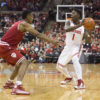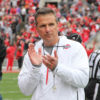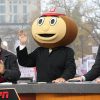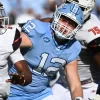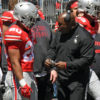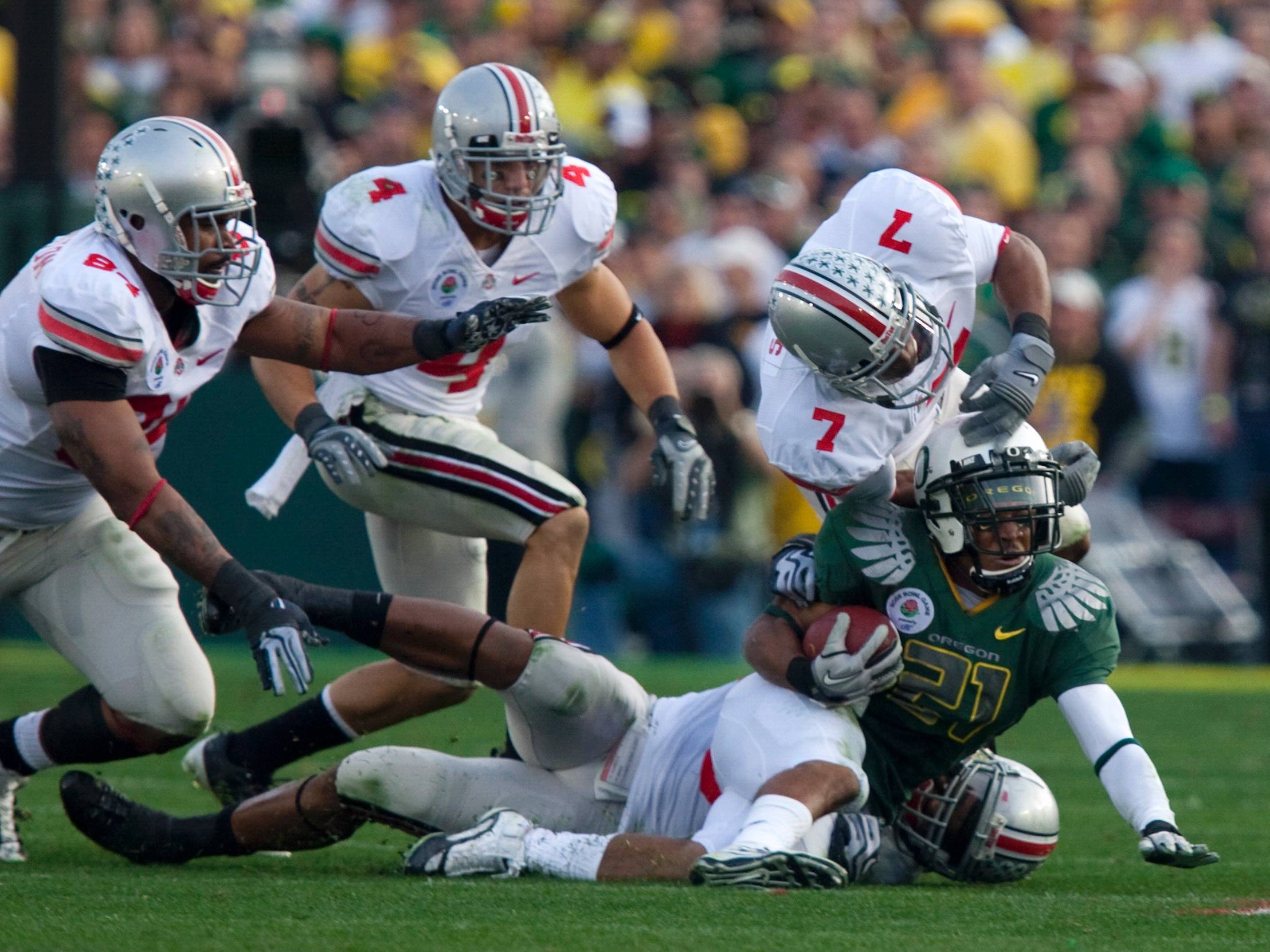
With the return of football up in the air, now serves as a perfect time for reflection on the history of football, and the strategic evolution of the game. To do that, the film study will be spending the offseason looking back at classic Ohio State games. Today’s film study revolves around the Rose Bowl following the 2009 season, between Ohio State and Oregon. Video is from this cut-up. Last week’s film study can be found here.
It’s hard to quantify the impact that Chip Kelly had on college football, because unlike most of the legendary innovators that came before him in the sport, he can’t really be tied to one play, one system, or one style. He didn’t create a formation, he didn’t invent a new way of playing, and he didn’t really do something so well that the rest of the nation immediately jumped to follow in his footsteps.
Even without that, however, Kelly in unquestionably a massive figure in college football, and considered to be one of the most influential coaches of the last decade for very good reason. He won a ton of games at Oregon, a place that had never operated on a level as high as it did under Kelly, and he produced a coaching tree that continues to grow and spread throughout the sport, even in Columbus, where his longtime mentee, Ryan Day, has turned an already great Ohio State program into must watch television because of his offense.
Even with that, unlike many of the greats that came before Kelly and had a similar impact, it’s hard to pin down one thing that he’s truly known for. He ran the option of the spread to great effect, better than just about anybody, save for maybe Urban Meyer, but he wasn’t the first person to do that. Rich Rodriguez, Meyer, Kevin Wilson and several others were experimenting with something that could be considered a spread option before Kelly was, and the style never really permeated through college football after Kelly’s departure to the NFL.
The same could be said with the read option, a staple of Kelly’s offense, but another concept that was not original to him. Again, Rodriguez, Meyer and Wilson were doing it first, and to be even more accurate, teams have been running quarterback options off of an unblocked defensive end for decades. Additionally, like with the general “spread option” offense, the read option only took hold for a couple years, with players like Johnny Manziel at Texas A&M, before fading into a smaller piece of offenses that make their living mostly in the passing game, like those of Alabama, Clemson, Ohio State, Oklahoma and almost every other team in modern college football.
Because nothing that Kelly was doing at Oregon truly took hold as the dominant ethos of college football for more than a year or two after his time at Oregon, it’s fairly difficult to, as said, quantify just how much of an impact he had on the game.
That is, until you look outwards at the big picture. Kelly’s impact is not a play or a system, it’s a rethinking of the way that teams run the ball. Kelly wasn’t the first to do anything, but he was, for a brief period, the absolute best at running the ball out of the spread, which was thought of for decades as a passing formation. Kelly changed the game by proving that the option, and that zone running could be modernized and molded into a dominant aspect of a more well-rounded overall offense. Those Oregon teams had half of the equation solved in piecing together what are now some of the most dominant offenses the sport has ever seen.
Those teams mentioned, Alabama, Clemson, Ohio State and Oklahoma, as well as nearly everybody else, are taking their cues on the ground from things that the Kelly Oregon teams did better than anyone else. Coaches like Day and Lincoln Riley have realized that while the spread option can’t be the whole offense (while a coach like Meyer never seemed to pick that up late in his tenure), it can be the base for a team that can’t be stopped. When you add things that Kelly was doing at Oregon on the ground with the style of passing attack that Mike Leach and Hal Mumme made popular in the 90s, it makes for an offense that literally cannot be slowed by any team lacking truly top end athletes. Kelly didn’t pass on a play or a scheme, he built the foundation and passed on the blueprint.
That’s what makes going back and watching his Oregon teams so fascinating: it’s almost like looking into a fun-house mirror. The things that the Ducks were running are so familiar, but they were always just missing that final piece to the puzzle. Because they never fully put it all together, they could still be beaten by good scheme paired with solid talent, which is exactly what happened in Ohio State 26-17 win in the Rose Bowl following the 2009 season. Still, despite the final score, this game is as instructive, as good a chess match between offense and defense as we’ve seen to this point in the throwback film study series. There’s so much good and so much valuable that can be taken from what both teams are doing. It’s a spectacular game, as the Rose Bowl always should be.
Ohio State struck first, both on the scoreboard and in the strategy battle. Up 7-0 after the first drive, Ohio State got the better of Oregon’s offense to open the game because of strength up front and solid anticipation from defensive coordinator Jim Heacock.
Still, to open the game, Oregon found a hole in the Buckeye defense that it had success returning to for the rest of the game, hitting a nifty jet sweep to get away from Ohio State’s strength in the trenches, and instead threatening the Buckeyes where they were weaker, on the perimeter.
This play, like a lot of Oregon’s rushing plays, works because of the misdirection in the backfield. Quarterback Jeremiah Masoli does a good job of selling the handoff to his halfback after he’s already given the ball to Kenjon Barner on the sweep, which keeps all three of Ohio State’s linebackers in place long enough for Barner to get to the perimeter. Keeping those linebackers out of the play for the first six yards or so downfield is crucial, because Oregon isn’t dedicating many blockers to actually lead for Barner, rather leaving linemen in to really sell a handoff up the middle.
With only two blockers on the outside, one for a corner and one for a safety, Oregon is still able to create even numbers, making that dive sell more effective, and leaving Barner with open space. As long as he can outrun a linebacker, this is usually going to be a decent gain, especially against a team without elite linebackers like this Buckeye defense.
Oregon found success with this play several times, all for basically the same reason.
Near the end of the first quarter, the Ducks run the sweep again, with the exact same two blocker look on the playside, again with a short field so that those blockers don’t have to cover too much space. It works even better this time because Ross Homan is held up long enough by the threat of a run up the middle that the left tackle is able to get to the second-level and seal him off, leaving the backside safety as the only player on the field capable of catching Barner. He does, but the scheme win goes to Oregon here, as it does a few more times in the game on this play.
The only time that Ohio State really holds up against the sweep is on this play in the third quarter, and it’s only because of a very good individual effort by Thaddeus Gibson. The linebackers actually read it better this time, but Jermele Hines gets blown up by the wideout before he can finish tracking the halfback. Luckily for the Buckeyes, Gibson had it sniffed out from the start, and takes a good angle to snag Barner from the side. If Oregon had looked to run to the outside more often in this game, isolating the Buckeye linebackers to the edges, it probably wins.
That’s because on just about everything inside the hash marks, Oregon was overpowered. Ohio State made it a focal point entering the game to shut down Oregon’s option attack, keying on Masoli with at least one spy on just about every play, while leaving Hines in as a nickel for the base formation rather than the typical 4-3.
“He was their main guy and we knew we had to focus on him,” defensive end Cameron Heyward said of Masoli. “They have a lot of talent, but Masoli is the guy who makes it all go. We knew if we could contain him, we had a good chance to win.”
Contain him the Buckeyes did, using Gibson and Heyward as constant insurance against the quarterback keep early in the game, staying home on everything and forcing the QB to hand off, only for LaMichael James to run straight into the teeth of the defense, where those linebackers were far more comfortable.
On the few times that Masoli did keep the ball, Heyward or Gibson was usually there to remind him that he would not be allowed to play his game. On the first Oregon drive, the Ducks broke out this inverted veer play action, hoping to get Masoli out of the pocket while freezing the linebackers with the playfake, so that Masoli would either have the shallow post across the field or the quick curl on the rolling sideline open for an easy first down completion. However, while much of the front seven does fall for that handoff fake, Heyward sticks to his assignment, while the backfield drops into man with a nice linebacker zone underneath.
Because everybody does their job downfield, Masoli has no quick options to turn to, and Heyward has him on the ground before he can make anything happen.
To end this drive, Ohio State plays smart, sound football again, dropping into what looks like a cover 4, while Masoli tries to sell the pass before tucking the ball for a draw. He never has anywhere to go, though, because the penetration up front is good, and the backfield behind that line doesn’t overreact to Masoli running. They take solid angles, and Kurt Coleman cycles in to force him out of bounds.
“They did a great job of taking Masoli away and not letting him run a lot of our read stuff,” Kelly said. “They had a guy assigned to our quarterback, so he had to hand the ball off. Part of trying to defend is us that you have to take something away, and they tried to take away the quarterback.”
To his credit, Masoli picked up on this pretty quickly, and started handing the ball off almost automatically before the first quarter was even over. Without the threat of the quarterback keep, Ohio State was still out in front of this, though. The Buckeyes continued dedicating just one player to Masoli, which he probably could have managed with an extra blocker, but because of his early struggles, he started to play more tentatively. Here, with only one player focusin on the quarterback, Ohio State is able to swallow up the run before it ever gets started by overwhelming the Oregon line.
This had an impact in the passing game, too. Oregon was never particularly comfortable passing the ball, and because of the lack of success on the ground early on, and with the pressure the OSU line was getting, Masoli struggled to find any sort of room in the air. Faced with several third-and-long situations, Ohio State nearly forced a couple turnovers, like on this play. Under pressure and trying to make something happen, Masoli forces a pass in the face of pressure, air mails it, and tosses it straight to a Buckeye defender. Ohio State isn’t doing anything special here, but because of the success against the option early in the game, Masoli is out of his comfort zone.
As good coaches usually do, however, Kelly picked up on what was happening and adjusted. Oregon shifted to more of a zone running scheme to try to spread the Buckeye linebackers out, and were able to create some yardage on the ground in the second and third quarters, putting Masoli in easier passing situations, like this third quarter fourth-and three.
With only a few yards needed to gain, Oregon sells out to stop the OSU pass rush with chop blocks on the right side of the line, while Masoli drops with just one read in mind on a fairly basic pass. With trips to the open side of the field, Oregon screens inside with both of the outermost receivers, creating more room for the receiver in the slot to run a quick out and pick up the first down. Hines misplays it badly, and Oregon has an easy first down.
Later in the drive, Oregon gets creative, and shows almost the exact same look, knowing that Ohio State would remember what happened the last time this was run. Ohio State does, the defensive backs play much tighter to their assignments to prevent a big play to the trips side, and in doing so, the entire defense completely forgets about the halfback to the short side of the field that just motioned out of the backfield. Oregon gets blockers downfield immediately, clearing out the two defenders that realized what was going on, and the Ducks again create an easy first down pass for Masoli.
Even with kind of clever series playcalling, Ohio State was able to reestablish itself enough in the final frame to keep Oregon out of the end zone, nursing a 26-17 lead with about six minutes to play. Because the Ducks are still mostly unable to run up the middle, Masoli is forced to try to make another play on third-and-long. Without something set up to misdirect the defense, the wideout is open but not open enough, Oregon comes up just short, kicks a truly cowardly field goal on fourth-and-inches and essentially ends the game with a miss.
In retrospect, if Oregon runs play action off of that jet sweep here, it probably results in a massive gain, if not a touchdown. Ohio State is playing about as conservatively as it can here, but the Buckeyes never figured out how to stop that play, and probably would have overreacted to the sweep, creating room for either a pass downfield, or, more likely, a ton of open room right into the middle of the defense for Masoli to run into.
Without that call, Ohio State is able to use its superior talent one last time to ultimately seal the game, playing sound, assignment football, just as it had all game long. There’s a sort of cruel irony that Oregon’s loss came because it ran out of tricks.



